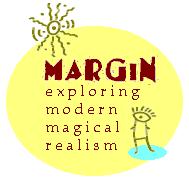
C R E A T I V E N O N F I C T I O N
A GHOST TOUR IN BEAUFORT, SC
b y s h e i l a n i c k e r s o n
b e l l i n g h a m, w a s h i n g t o n


C R E A T I V E N O N F I C T I O N
A GHOST TOUR IN BEAUFORT, SC
b y s h e i l a n i c k e r s o n
b e l l i n g h a m, w a s h i n g t o n

TOURISTS COME with visions, often bolstered by book and movie: Gone with the Wind and, more recently, Midnight in the Garden of Good and Evil. Under the live oaks they find evidence of the Old South and much whispering in the leaves that fall at their feet. In the marshes, where cordgrass constantly moves and much is indistinct, it is possible, at times, to see rips in the curtain of day. At dusk, when the whippoorwill—tailor of darkness—sits at the edge of night sewing up the sunset sky, stories escape.In an area said to be more haunted than any other in the country, ghost tours have become a niche business. I joined one in Beaufort on a bitterly cold winter’s night. Led on foot by a young woman in revealing Revolutionary dress with only a shawl covering her exposed shoulders and décolletage, we walked by the light of her battery-operated 18th-century lantern through the dark back streets of the oldest houses and the strangest stories. With Spanish moss (which, as the residents are quick to point out, is neither Spanish, nor moss, but an air plant) blowing over our heads from the huge live oaks and our guide’s preternatural anecdotes gripping us like the undeniable cold, we were ready to see or believe anything.
We ended our tour in the graveyard of St. Helena’s Episcopal Church, originally built between 1724 and 1726. There, we approached a curious grave up against an outer wall. At its foot fly two small British flags while the tombstone gives two names—"Lieutenant William Calderwood and Ensign John Finley of Colonel Prevost’s British troops, killed in battle near Gray’s Hill, February 3, 1779, buried here February 5, 1779." The people of Beaufort had insisted on a decent and dignified Christian burial, as well as one that would pay permanent homage to the victims’ native home.
The accompanying story, as told by the guide, is as follows: During the Civil War, when Beaufort was used as a hospital town, and churches as operating rooms and tombstones as operating tables, a couple of Union soldiers on medical duty came out of the church for a smoke break. Looking out over the graveyard, they spotted a most unusual sight: two soldiers wearing the uniforms of the British military of eighty years before. Calling others, they went to investigate. The redcoats disappeared as they approached, but not before they had been seen by a number of Union troops willing to testify to the event. The British soldiers became one of the documented cases of apparition to be told over and over in Beaufort: a fitting mix of two wars, violent death, gentlemanliness, and ghostliness.
Next door to the soldiers, so crowded in their bones, lies the small village of the Barnwell family, among whom red orbs of light are said to dance when a new inhabitant takes up residence. Colonel John ("Tuscarora Jack") Barnwell—Irish immigrant and Indian fighter—was the founder of Beaufort.
I return here every winter—something more than a tourist, something less than a resident—and often visit the churchyard, but not at night. Observing activity there is a kind of birding, but I have ample opportunity in a marsh outside my home where egrets and herons and blackbirds rise, cutting unpredictable holes in the sky.

margin home | contents | links | reading list | marginalia | contributors | staff | guidelines | kudos | subscriptions | contact us
Layout, design & revisions
© Tamara Kaye Sellman, Webmaster
Active home URL:
http://www.magical-realism.com
(also: https://www.angelfire.com/wa2/margin/index.
html)
TERMS OF USE: This site contains copyrighted materials, including but not limited to text and graphics. You may not use, copy, publish, upload, download, post to a bulletin board, include in any weblog or otherwise transmit, distribute or modify any elements of this site in any way, except that you may download one copy of such contents on any single computer for your own personal, non-commercial use, provided you do not alter or remove any copyright, author attribution or other proprietary notices.